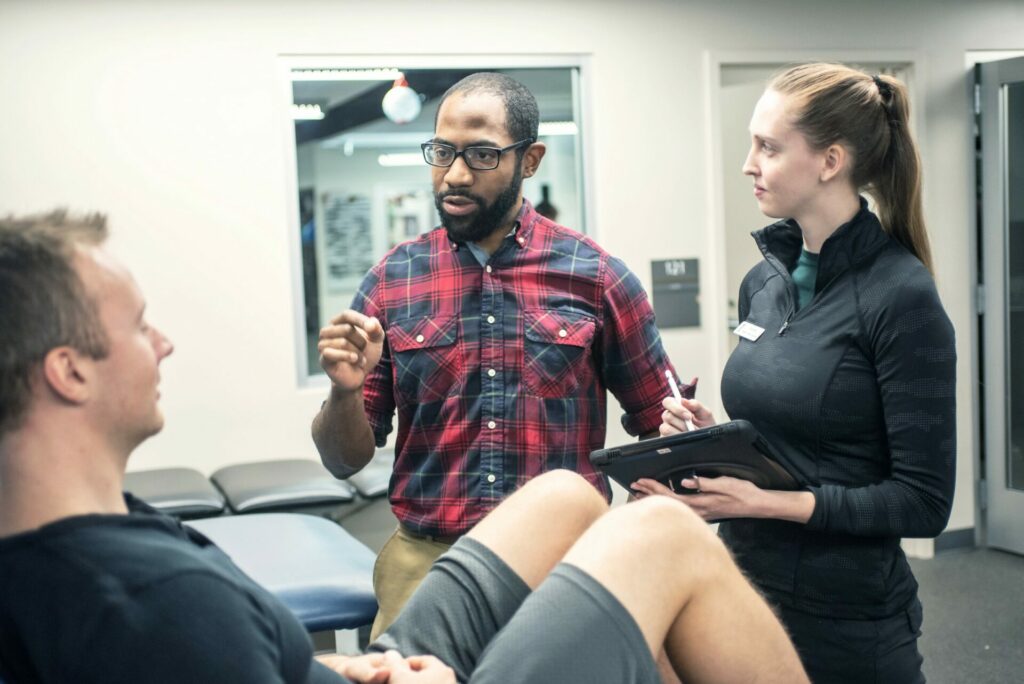The Importance of Athletic Trainers in High Schools
Dr. Matthew Smitley DAT, AT, ATC, SFMA
It’s an unfortunate scene that plays out at High School sports fields, courts, and facilities. An athlete sustains an injury and a health care professional runs out to the field to help them… sometimes. A recent study found that over one third of all high schools nationwide didn’t have access to a licensed or certified athletic trainer (AT).1 For those that did have access to an AT, about half of those roughly half had access to an AT full-time.1 What a staggering statistic – roughly one third of the 20,000+ high schools in the United States have guaranteed health care for their student athletes.
There are many issues and challenges that surround the reason for these statistics. However, for those unfamiliar with ATs and the profession, they may ask “Why are athletic trainers in High Schools so important?” There are many reasons to support this question.
Why are Athletic Trainers in High Schools So Important?
Qualified Health Care
Having certified and licensed athletic trainers in high schools is necessary to providing competent and qualified health care for student athletes and active individuals. Athletic trainers complete rigorous education to enter the profession which prepares them for the broad range of injuries, illnesses, and challenges that student-athletes may experience. Additionally, they have to complete additional education (i.e. continuing education) to maintain their national certification and licensure. Relying on coaches and teachers to provide health care for student-athletes is risky. Also, “hoping” for a health care professional to be present at an athletic practice or contest does not facilitate a safe environment for anyone present. Having an athletic trainer on-site to provide health care increases the likelihood for positive outcomes and safer active participation for everyone involved.
Safety for Participation
How often would one be able to visit a public pool and not see a lifeguard on duty? At first thought, it’s rare… if ever! The same should be the case for having athletic trainers in high schools. Athletic trainers are important components in the overall safety and care plans for each institution they are employed by. Athletic trainers have many responsibilities and among those, prevention and recognition of injuries are at the top of the list. Athletic trainers in the high school setting have unique training and education that prepares them to implement injury prevention programs, carry out strategies to recognize and mitigate risks, and many other important tasks.
Access to Health Care
Athletic trainers in the high school setting are often one of the few, if only, points of access to qualified health care for many student athletes. Given the statistics that were presented earlier, this demonstrates that the high school setting is largely an underserved population. Almost two thirds of high schools in the country don’t have regular, consistent access to on-site health care. Additionally, ATs commonly provide their health care services at no cost to the patient themselves. Simply by being present and rendering the care they are trained to provide; ATs can play an integral role in elevating the care that any student would be able to access. By being on-site, ATs can provide care with minimal disruption to the student-athlete’s participation in school or extracurricular activities. For these reasons, the correlation between athletic trainers and health/well-being are very clear.
What do High School Athletic Trainers Do?
Injury Prevention, Recognition, Diagnosis, and Care
Athletic training responsibilities cover a number of different domains. Of these, injury prevention, injury diagnosis, and immediate care of injuries comprises the bulk of their duties. High school ATs are often the first point of contact for any injury, illness, or ailment a student-athlete may have.
Therapeutic Interventions
In the High School setting, ATs are often able to render care, therapeutic exercises, and apply therapeutic modalities for patients on-site. These interventions can help facilitate and even speed up the healing process for many injuries.
Administrative Duties
Athletic trainers in high schools can also carry out various health care administrative duties as well. These span numerous areas including injury documentation, coordination of care and physician’s appointments, policy & procedure implementation, as well as engaging with their patients, parents, and local community. These ATs often find themselves serving as a patient advocate and liaison between each of the numerous influences on their patient’s health and well-being.
By prioritizing the presence of ATs in High Schools nationwide, we are prioritizing the health, safety, and well-being of our active students. Here at the University of Idaho, our MSAT and DAT programs recognize the need for ATs in these underserved populations. Through partnerships with local schools and health care services, we have been able to provide AT residents to serve these schools while also learning how to advance their profession and skills. If you are interested in how the U of I can help you pursue your health care profession goals, reach out! We’d love to partner with you in your pursuit of providing care to all people!
1. Huggins RA, Coleman KA, Attanasio SM, et al. Athletic Trainer Services in the Secondary School Setting: The Athletic Training Locations and Services Project. Journal of Athletic Training. 2019;54(11):1129-1139. doi:10.4085/1062-6050-12-19
